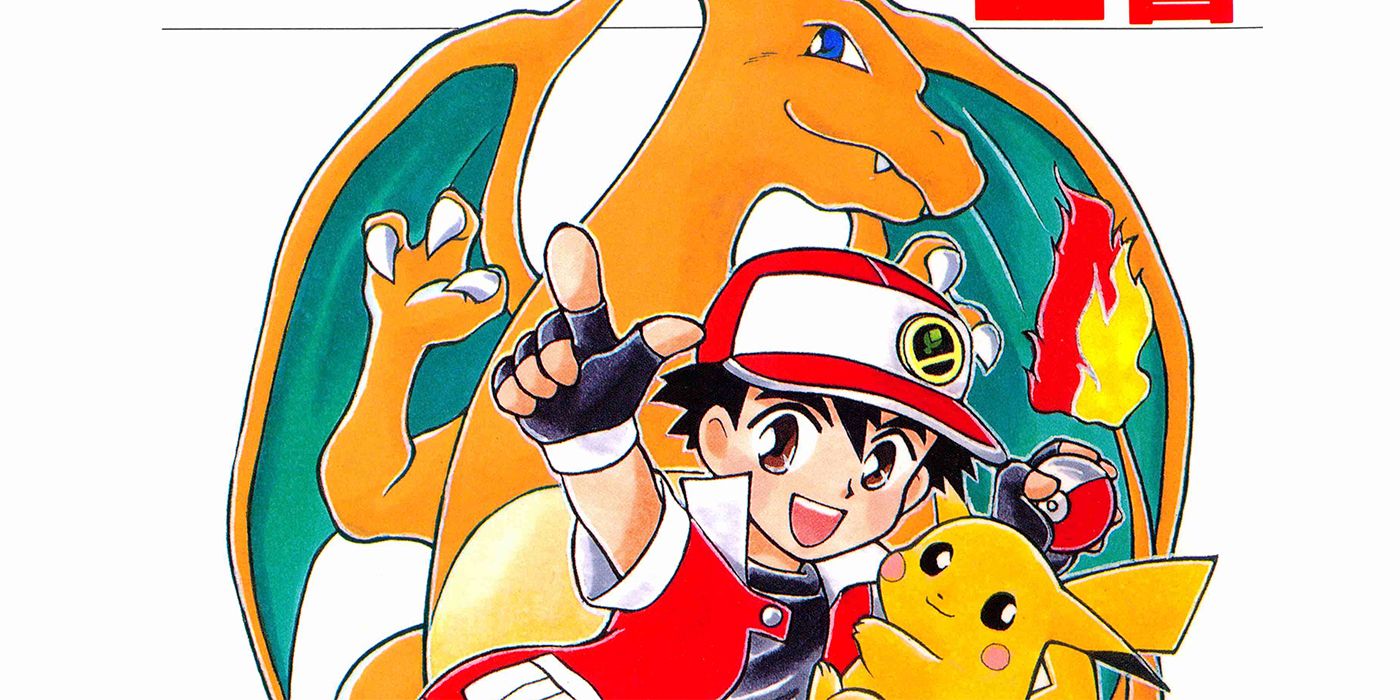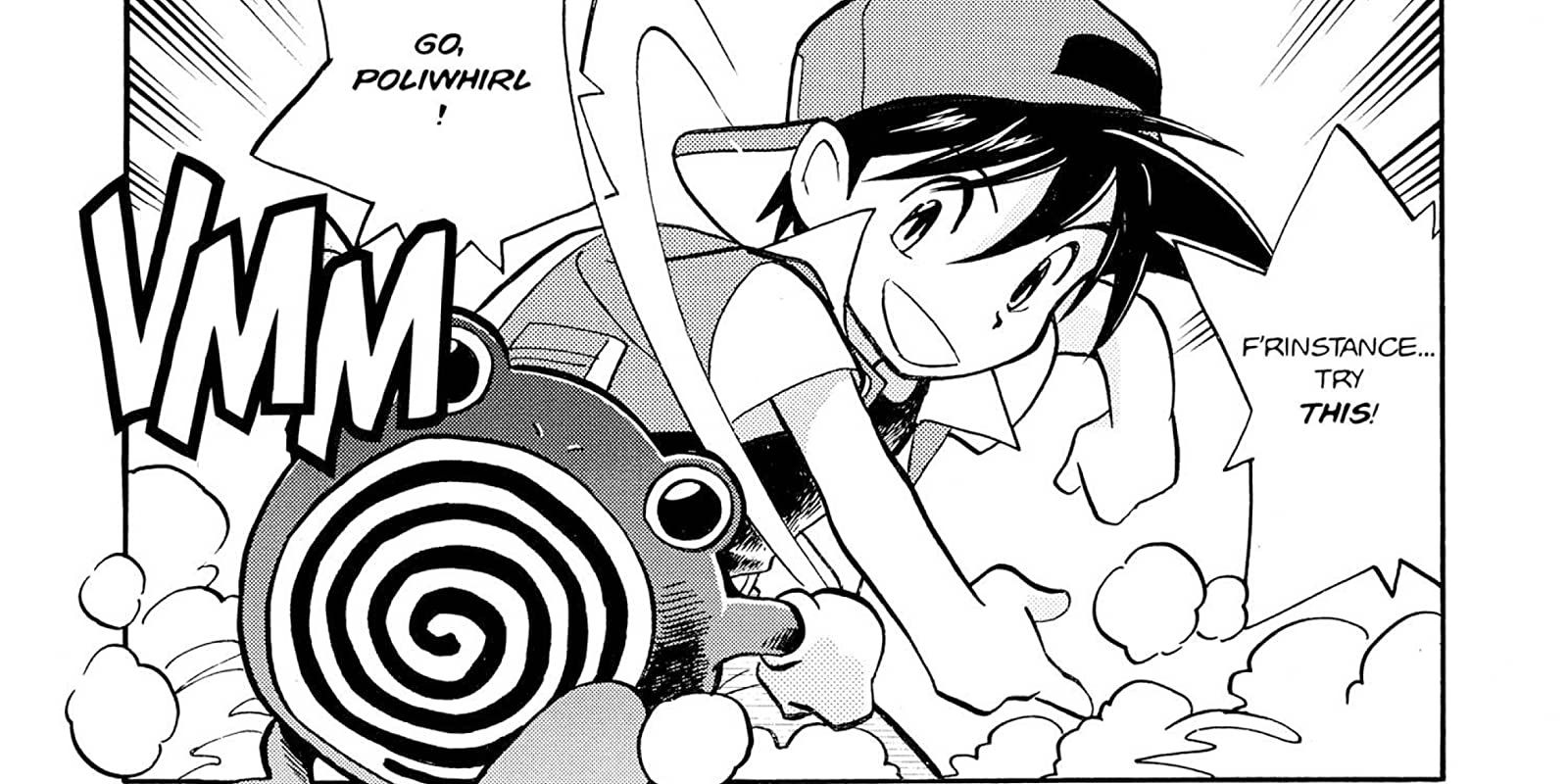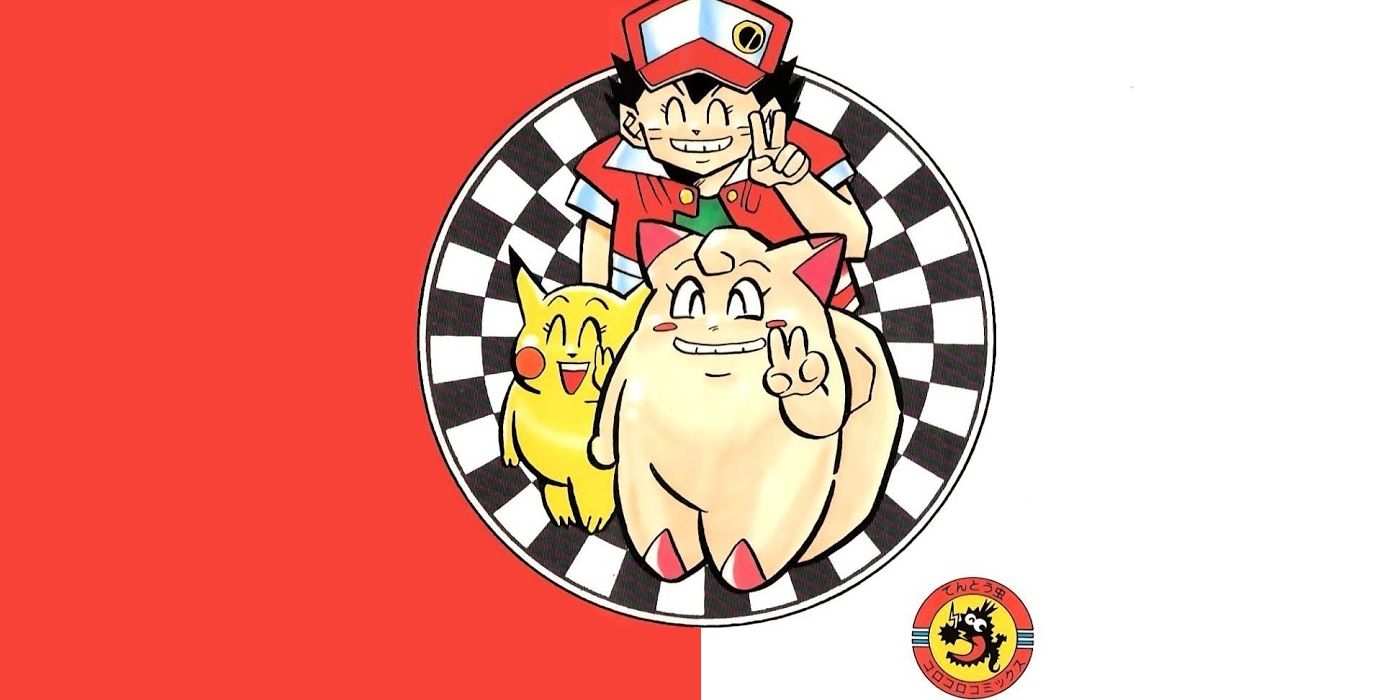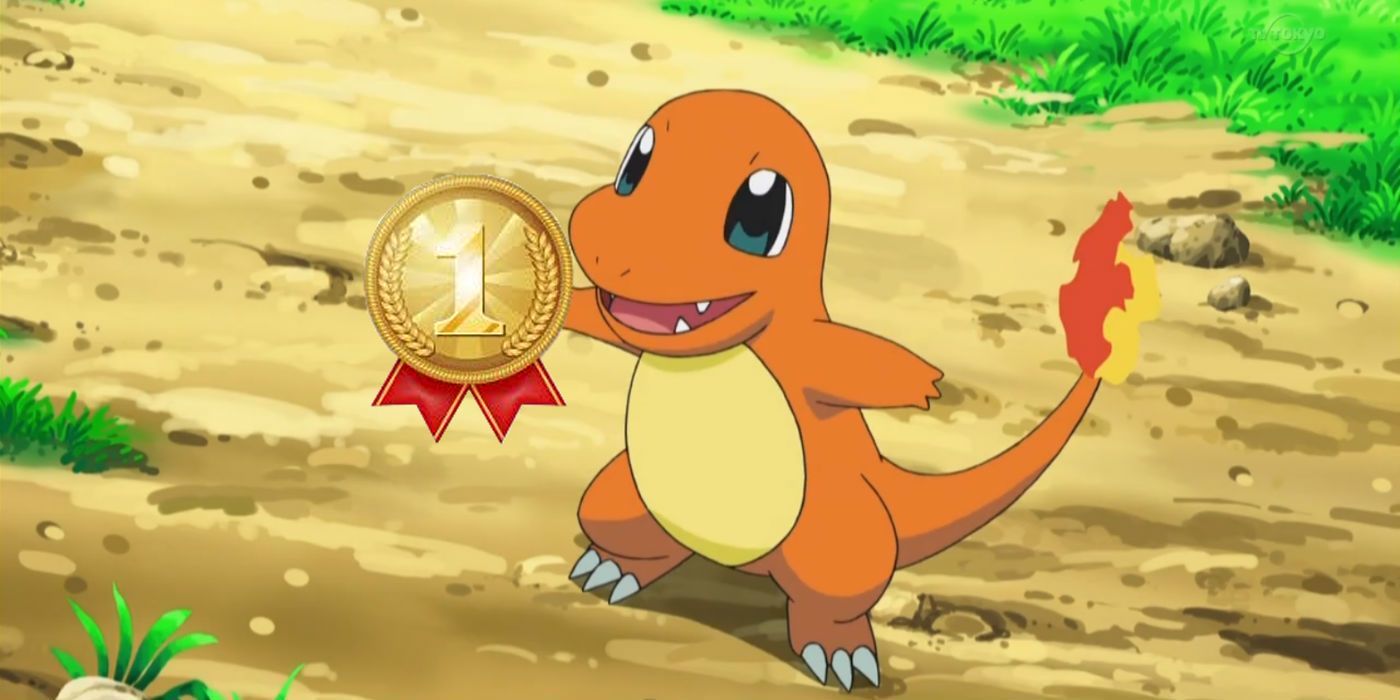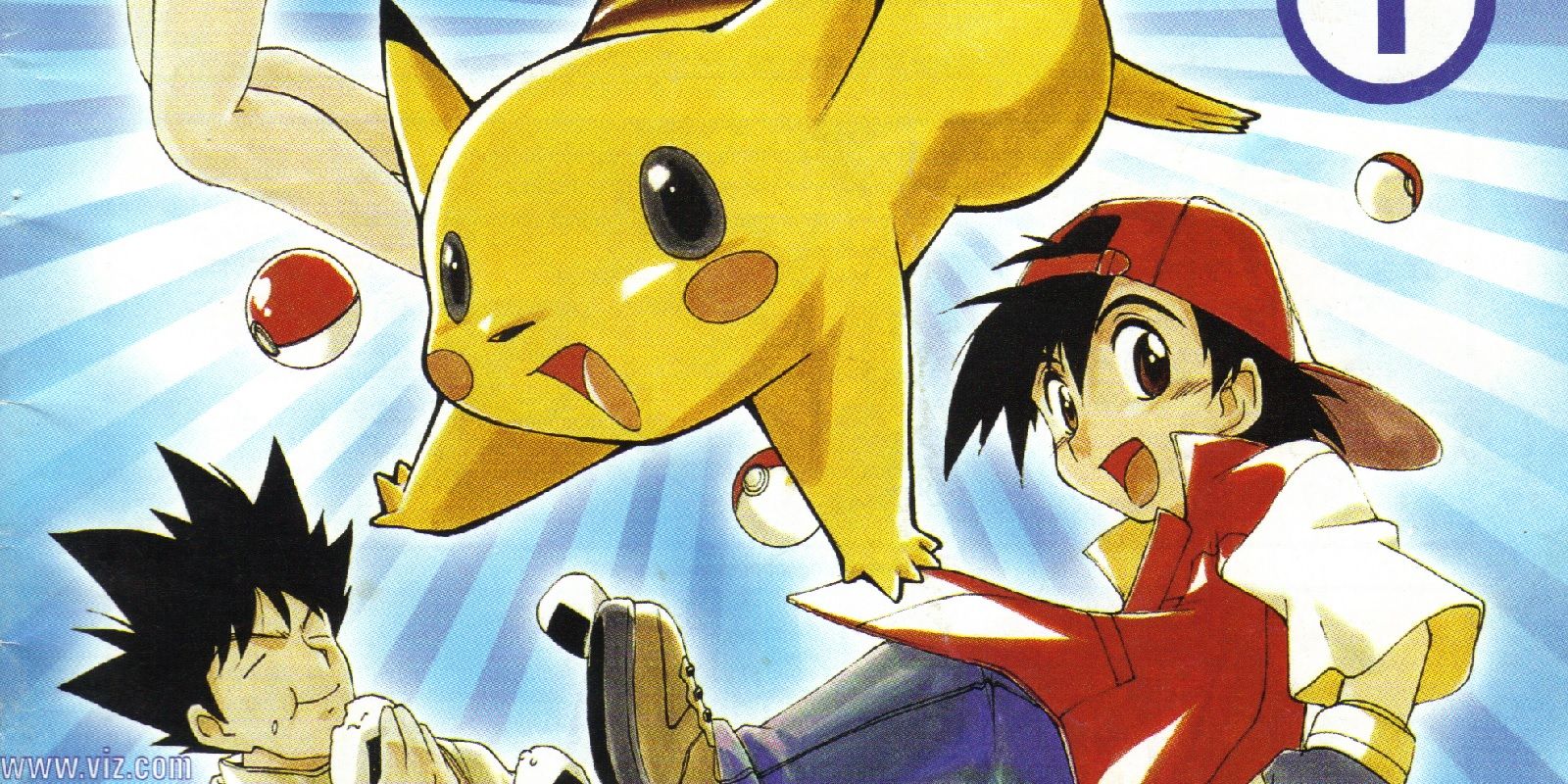In the world of Pokémon, choosing your first partner is treated as a big deal. Traditionally, there are three different starter Pokémon in each region, aligned with the basic Fire, Water, and Grass types in a rock/paper/scissors style triangle, and this choice is the first a player is presented with. Choice of starter can have a major effect on a player's experience early in the game, and that's just as true for the manga version of the protagonists.
Unlike players, however, manga protagonist Red hasn't been limited to just the original trio. With stories starting in unconventional ways and sometimes following plotlines that are wildly different from the games, Red's various incarnations have had the chance to start questing with all kinds of different Pokémon.
Poliwhirl -- Pokémon Adventures
By far the longest and most popular manga series in the franchise, Pokémon Adventures, or Pokémon Special as it is known in Japan, was the first to debut. Being the first, a lot of the traditions of the series hadn't been fully established yet, giving its early chapters quite a different feel from the games. In this continuity, Red sets off to meet Professor Oak with one Pokémon by his side already: a Poliwhirl. Red first met Poliwhirl when it was just a wild Poliwag, near a small pond. When Red fell in and was at risk of drowning, Poliwag was able to evolve and pull him out of the water, setting the stage for a partnership that would last a lifetime.
While Red does visit Professor Oak and obtain a more conventional starter (Bulbasaur), Poliwhirl would always be the Pokémon that he bonded with first. There doesn't seem to be a clear reason as to why Poliwhirl was chosen by the creators, but Poliwhirl was fairly prominent in early advertisements for the series, especially around the time of its debut in the west.
Clefairy -- Pokémon: Pocket Monsters
In the bizarre gag manga known by the straightforward title Pokémon: Pocket Monsters, Red begins his adventure by wandering out into the tall grass and stumbling across some very territorial monsters led by a Nidoran. Clefairy manages a fluke victory by falling on it, circumventing a match-up that was difficult even before fairy types, allowing Red to continue on his way to Professor Oak's lab to choose a starter. When he arrives, however, he discovers that Clefairy had followed him to the lab. Rather than taking one of the prepared starters, Red chooses the Clefairy, which had saved him through its shenanigans. Since this series is intended to be comedic, Clefairy and Red remain silly from here on out, defeating gym leaders through unconventional means and bumbling their way across the world. While Pokémon Adventures changed protagonists as it moved from region to region, Pokémon: Pocket Monsters kept following Red and Clefairy all the way to Alola, which marked the end of the manga's run in 2020.
Clefairy was once intended to be the flagship creature for the series and the face of the brand like Pikachu has been for decades now. There were some concerns, however, that boys wouldn't like Clefairy due to how cute it is and its pinkish color. Pikachu seemed to strike the perfect balance of "cute" and "cool" that Game Freak was looking for, and so it was quickly shifted to the prominent position it has held ever since.
Charmander -- Pokémon Zensho
A manga trainer is, however, sometimes presented with the same choice as players, a fact which often comes up in online debates about which starter Pokémon is best. The untranslated manga Pokémon Zensho is one of the most accurate adaptations so far, matching up almost one to one with the plot of the Pokémon Red and Blue games. Its protagonist, Satoshi, shares his name with the anime's protagonist, known in the west as Ash, although his design and personality are directly based on Red. Satoshi was one of the default name options in the Japanese releases of Pokémon Red and Green, after creator Satoshi Tajiri, and was the name preferred by official sources prior to the release of the second generation Pokémon games, when version colors became standard.
Being such a close adaptation, Pokémon Zensho naturally begins with that iconic decision between Bulbasaur, Charmander, and Squirtle. Satoshi chooses Charmander, while his rival Shigeru (named for Nintendo legend Shigeru Miyamoto) takes Squirtle. Satoshi and Charmander proceed through the gyms and encounters with Team Rocket until they find themselves at the threshold of the Elite Four. While all of the original starters have maintained their popularity over the last 25 years, it's certainly true that Charmander and its final form, Charizard, have received special attention, with Charizard having received two Mega forms and a Gigantamax form, the latter of which was used as the champion's ace in Pokémon Sword and Shield.
Pikachu -- Pokémon: The Electric Tale of Pikachu
The manga known as The Electric Tale of Pikachu is an oddball in Pokémon history, as it is an adaptation of certain anime episodes that takes major liberties with the plots it adapts. Nominally starring Satoshi/Ash, the character is actually a bit of a hybrid between the anime's Ash and Red from the games and other manga, wearing red-colored clothes rather than Ash's blue. He often travels alone, only occasionally running into Misty and Brock as they traverse the region, and has a slightly more serious personality, as he faces some bigger threats. And since The Electric Tale of Pikachu drew to a close after its Kanto-based story concluded, it actually provides an idea of what an ending for the anime's classic early seasons might have looked like.
Much like in the anime, this Satoshi finds himself partnered up with a willful Pikachu, although this time the yellow mouse is discovered under his house, chewing through wires and disrupting the flow of electricity. While all of the above continuities saw their protagonists capture and use a Pikachu on their team eventually, this manga was the first to actually show Pikachu as a starter. Pikachu's popularity saw it gain official starter status in Pokémon Yellow: Special Pikachu Edition, released after this manga's debut and brought elements of the anime and The Electric Tale of Pikachu into the video game series. This starter designation was reaffirmed not long ago in the Nintendo Switch game Let's Go! Pikachu, alongside its opposite version counterpart, Eevee.

